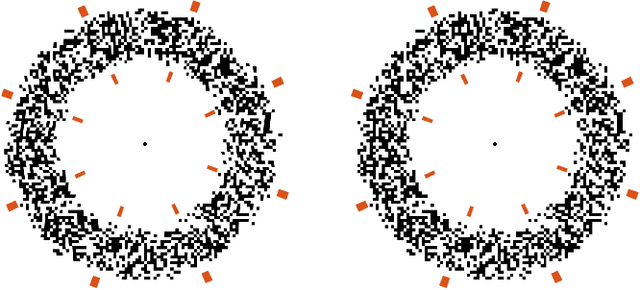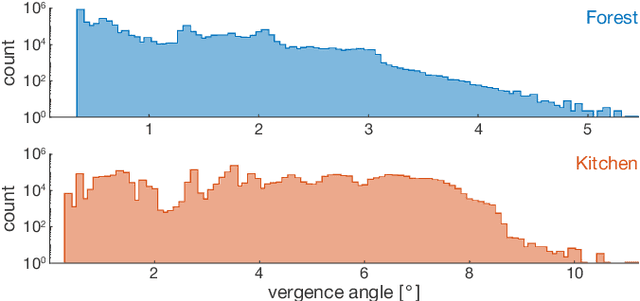Sophie Kergaßner
Towards Understanding Depth Perception in Foveated Rendering
Jan 28, 2025



Abstract:The true vision for real-time virtual and augmented reality is reproducing our visual reality in its entirety on immersive displays. To this end, foveated rendering leverages the limitations of spatial acuity in human peripheral vision to allocate computational resources to the fovea while reducing quality in the periphery. Such methods are often derived from studies on the spatial resolution of the human visual system and its ability to perceive blur in the periphery, enabling the potential for high spatial quality in real-time. However, the effects of blur on other visual cues that depend on luminance contrast, such as depth, remain largely unexplored. It is critical to understand this interplay, as accurate depth representation is a fundamental aspect of visual realism. In this paper, we present the first evaluation exploring the effects of foveated rendering on stereoscopic depth perception. We design a psychovisual experiment to quantitatively study the effects of peripheral blur on depth perception. Our analysis demonstrates that stereoscopic acuity remains unaffected (or even improves) by high levels of peripheral blur. Based on our studies, we derive a simple perceptual model that determines the amount of foveation that does not affect stereoacuity. Furthermore, we analyze the model in the context of common foveation practices reported in literature. The findings indicate that foveated rendering does not impact stereoscopic depth perception, and stereoacuity remains unaffected up to 2x stronger foveation than commonly used. Finally, we conduct a validation experiment and show that our findings hold for complex natural stimuli.
 Add to Chrome
Add to Chrome Add to Firefox
Add to Firefox Add to Edge
Add to Edge